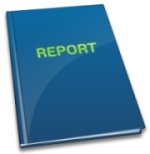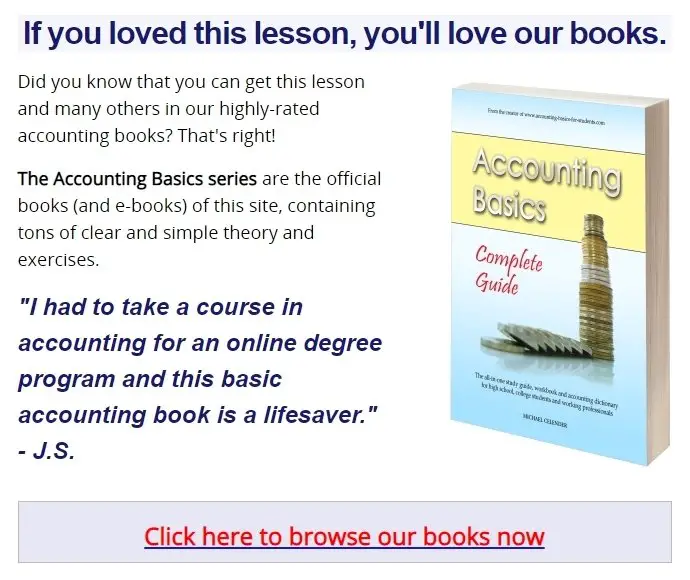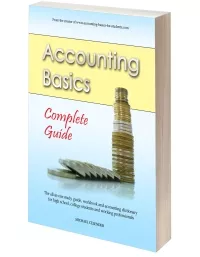The Accounting Cycle
Lesson One: The Accounting Cycle (this lesson)
Lesson Two: Source Documents
Lesson Three: Basic Accounting Journal Entries
Lesson Four: Accounting Journals: The Books of First Entry
Lesson Five: T Accounts and Ledgers
Lesson Six: Balancing T-Accounts
Lesson Seven: Posting Journal Entries to the Ledger
Lesson Eight: Debtors and Creditors Control Accounts
Lesson Nine: Trial Balance
In this lesson we're going to take a step back and look at the big picture of accounting and the cycle of actions an accountant needs to take.
Be sure to check your understanding of this lesson by taking the quiz in the Test Yourself! section further below. And right at the bottom of the page, you can find more questions on the topic submitted by fellow students.
What is the Accounting Cycle?
The accounting cycle is the various steps or stages of work or activity that we go through each year in accounting.
The cycle is depicted diagrammatically below:
The cycle above is a cycle of actions we go through when accounting for any business.
Steps in the Accounting Cycle
1. Source Documents
Source documents are documents, such as cash slips, invoices, etc. that form the source of, and serve as proof for, a transaction.
In other words, they are the first documents that exist relating to a transaction.
Bookkeepers and accountants need to keep source documents for each transaction.
In my full lesson on source documents you'll learn about invoices, cash slips, receipts, check counterfoils, bank deposit slips and more.
2. Journals
Journal entries are that first basic entry of debit and credit for each transaction, chronological (date-order) records of transactions entered into by a business.

In the examples we have been doing in previous chapters, where we debited one account and credited another, we have been doing journal entries.
Read through this first lesson on basic accounting journal entries for a review of the ten most common journal entries.
Journals also refer to the books of first entry, such as the cash receipts journal, the general journal and more.
We'll run through each of these in the second lesson on accounting journals, where you'll get a good idea of what each one is for, its format and how it works.
3. Ledger (T-Accounts)
The ledger is a grouping of the accounts of a business.
The accounts are in the shape of a "T" and thus are often referred to as T-accounts.
In this step we take all the journal entries (debits and credits) relating to one account (in this example, bank) and draw up an account with all the transactions relating to it.
There are a few lessons on T accounts:
- In the first lesson we'll look at the format of a T-account and how to draw one up.
- In the second lesson we'll learn how to balance a T-account.
- Next we'll look at how to post journals to the T-accounts (posting means transferring information from the journals to the T accounts).
- And, in our final lesson on T accounts, we'll go over control accounts and take a closer look at the debtors and creditors ledgers.
4. The Trial Balance
The trial balance is a sheet or report displaying all the accounts of a business, drawn up as a trial (test) of whether the total of all the debit balances equal the total of all the credit balances.
(A balance is the amount of an item at a point in time. For example, The balance in the bank account on the 1st of January was $5,000.)
The trial balance is prepared as a final check before drawing up the financial statements. When errors are shown up in the trial balance, we make corrections through adjusting entries.
Click here for the full lesson on the trial balance.
5. Financial Statements
The financial statements are the key reports of a business.
As mentioned, they are prepared from the information in the trial balance above.
The purpose of the financial statements is to show the reader the financial position, financial performance and cash flows of a business.
Financial statements are usually prepared once a year, and consist of an income statement, statement of changes in owners equity, balance sheet, cash flow statement and where needed, an auditor’s report.
We will deal with these various financial statements in the next section on this site, Financial Statements.
Closing Entries
There is a final step in the accounting cycle not shown above, which is the closing off of accounts (or closing entries), which are done at the end of each year along with the production of the financial statements.
This involves closing out temporary accounts (incomes and expenses), and transferring their balances through a profit account into the owners equity (reserves).
Closing entries are not really covered on this site, but are covered in detail in our official books - Accounting Basics: Study Guide or Accounting Basics: Complete Guide.
Manual vs Computerized Accounting Systems
It is important to note that these days many businesses use computerized accounting systems, and so the accounting cycle is largely automated.
This means that the bookkeeper or accountant simply enters the basic data about a transaction, and the posting is then automatically done to the relevant accounts and through the trial balance to the financial statements. Temporary accounts are also automatically closed off at the end of the period.
Additionally, errors occur less often with computerized systems, but even when these do occur, the bookkeeper or accountant can make a quick adjusting entry and watch as the correction is automatically carried through to the revised T-accounts, trial balance and financial statements.
But even with this automation, it is still important that bookkeepers and accountants understand the accounting cycle and its various stages.
Test Yourself!
Before you start, I would recommend to time yourself to make sure that you not only get the questions right but are completing them at the right speed.
Difficulty rating:
Beginner
Quiz length:
4 questions
Time limit:
5 minutes
Important: The solution sheet on the following page only shows the solutions and not whether you got each of the questions right or wrong. So before you start, get yourself a piece of paper and a pen to write down your answers. Once you're done with the quiz and writing down your answers, click the Check Your Answers button at the bottom and you'll be taken to our page of solutions.
Good luck!
Okay, that's it for our tutorial on the accounting cycle.
Hopefully you now understand the big picture of accounting and the various stages of work that need to be done.
When you're ready, click on any of the links above to go through a lesson on a specific topic.
Good luck!
Stay up to date with ABfS!
Follow us on Facebook:
Return from The Accounting Cycle to the Home Page
Lesson One: The Accounting Cycle (this lesson)
Lesson Two: Source Documents
Lesson Three: Basic Accounting Journal Entries
Lesson Four: Accounting Journals: The Books of First Entry
Lesson Five: T Accounts and Ledgers
Lesson Six: Balancing T-Accounts
Lesson Seven: Posting Journal Entries to the Ledger
Lesson Eight: Debtors and Creditors Control Accounts
Lesson Nine: Trial Balance
Questions Relating to This Lesson
Click below to see questions and exercises on this same topic from other visitors to this page... (if there is no published solution to the question/exercise, then try and solve it yourself)
Accounting Cycle Question
Q: Which steps in the accounting cycle require the most thought and judgement by the accountant: (a) preparing a trial balance, (b) posting adjusting, …
Accounting Question: Analyze, Record Journals and T-accounts, Create Trial Balance
ASSIGNMENT#2
The following are the transactions of Overnight Auto Service for the month of November 2006:
• Nov 1: McBryan started business by …
Income Statement vs
Profit and Loss Account
Q: What is the difference between the income statement and the profit and loss account?
A: The income statement is a statement (a report) which …
© Copyright 2009-2023 Michael Celender. All Rights Reserved.
Click here for Privacy Policy.












Comments
Have your say about what you just read! Leave me a comment in the box below.